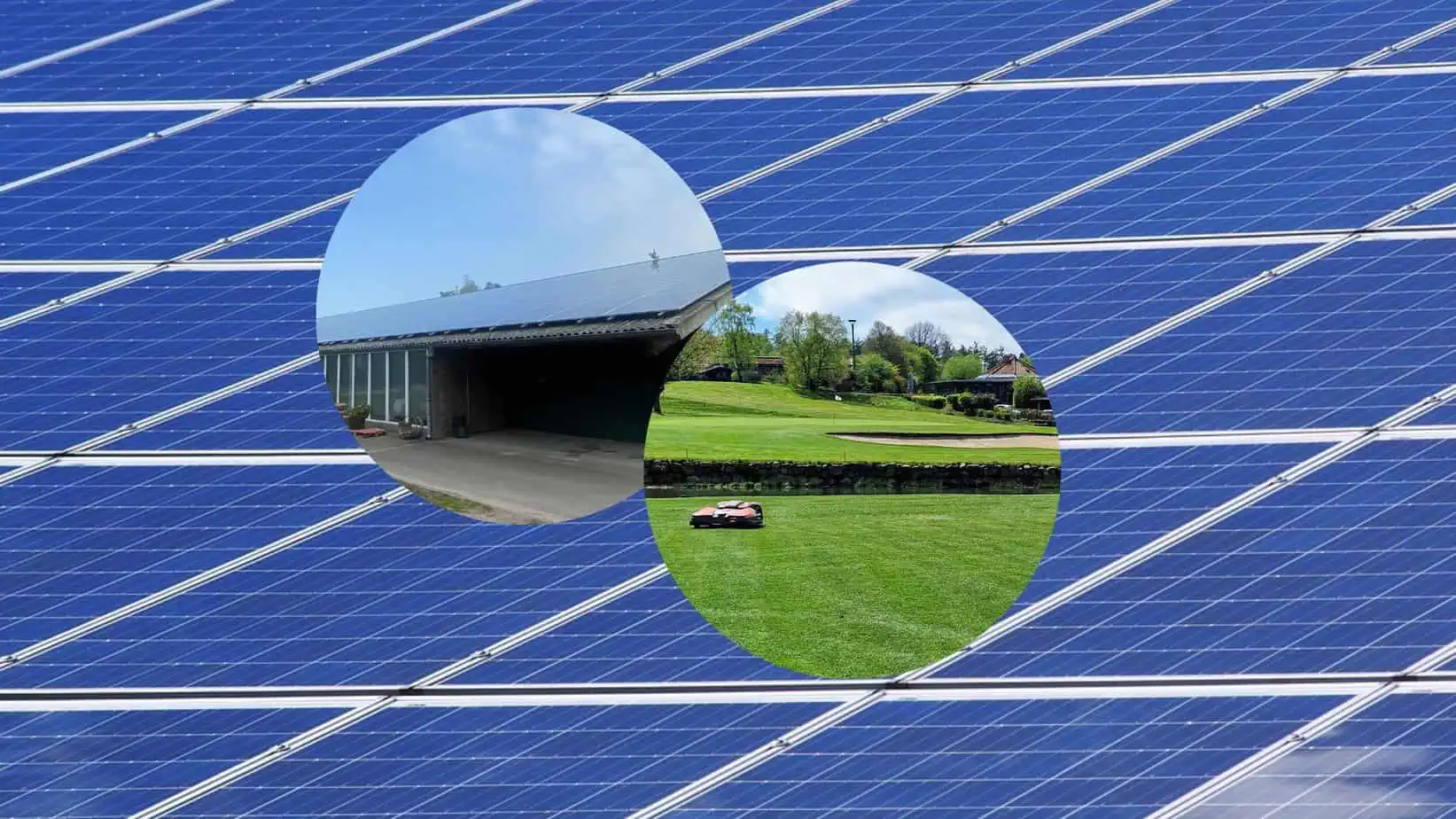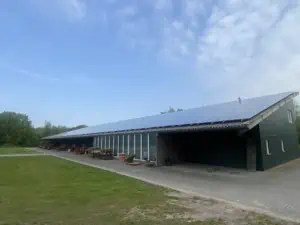Golf and energy: photovoltaics on a grand scale
More and more golf courses are turning to photovoltaics on a grand scale as part of the energy transition. Dieter Worms, owner of the Gut Apeldör golf course in Schleswig Holstein, is in high spirits when it comes to this topic: “It’s just fun to talk about these things,” he says, and he’s not just referring to the photovoltaic system he had installed back in 2010, which has a peak output of 133 kWp. He also means the increasing electrification of the golf course, which in this case is reflected, for example, in the operation of six robotic mowers. 27 fairways they now mow. “After all, I wouldn’t have thought 20 years ago that I would have to deal with things like this, but that’s the way it is. I am simply open to these new questions”.
Openness is an attitude that more and more golf courses in Schleswig-Holstein are discovering for themselves when it comes to energy. In northern Germany, where wind power has become a model of success, people are ready for transformation when it comes to energy.
Energy crisis as a catalyst for the changeover process
The Ukraine crisis with the increase in energy prices has also changed a lot in the golf sector in Germany. Bills for gas have skyrocketed into six figures on larger installations. The search for alternative energies has begun. This is also because it is becoming apparent that electricity consumption on golf courses is more likely to increase than decrease in the future. Increasing dry spells could lead to increased use of the energy-intensive sprinkler systems. In turn, labor shortages make the use of autonomous mowers on fairways increasingly likely.
This is one of the reasons why Norbert Prigge, course superintendent of the Großensee golf course in the greater Hamburg area, and his colleagues on the board have meanwhile presented the members with a concept for founding a limited liability company outside the GC Großensee non-profit association, which will operate a photovoltaic system with 200 kWp in the future.
“We survived,” Prigge dryly sums up last winter’s energy crisis, which was difficult for the nonprofit golf club. He would not like to draw such a conclusion in the future. The photovoltaic system is installed on the roofs of the depot, the financing of which has passed through the members. You have subscribed for shares in the limited liability company. “The shares were oversubscribed pretty quickly,” Prigge notes with satisfaction. The advertised return on investment is attractive, and in a federal state like Schleswig-Holstein, the citizens have long been familiar with the advantages of renewable energies. “But when I started here as a groundskeeper, I certainly didn’t think that I would also be involved with a solar energy limited liability company in this capacity,” he smiles. The job profile groundskeeper on the board has just become a different one. 197,000 kilowatt hours will be supplied by the plant; the club’s own consumption is currently just under 100,000 kilowatt hours.
However, new power consumers have also been added in Großensee with three robotic mowers. One of the small mowers manages the short course, and two others nine holes. “The mowing pattern looks really great,” Prigge is pleased to say, echoing Dieter Worms at Gut Apeldör, who, after operating the robots for a year, now also has their cost figures ready. Each Ceora mower costs him 50 euros a month, he notes, and including new blades he comes to 5000 euros a year.
The electricity from his photovoltaic system is currently still flowing entirely into the public power grid, because in 2010 there was a government subsidy program for this type of installation. “But after 20 years it will run out and then I will fully use my own electricity,” the operator explains. “After all, I can produce any number of things.” In the past twelve years, he has not changed anything on the panels, only cleaned them regularly to maintain efficiency.
After all, there are plenty of consumption points on a golf course: e-charging points, in the clubhouse and in the catering facilities, the robotic mowers and the outdoor lighting. Of course, Worms passes on a piece of life wisdom, you always have to live with skeptics on the plant who refuse to accept innovations. But he also deals with this in a positive way: “I need this mindset around me,” he notes. This only increases his motivation to innovate.








